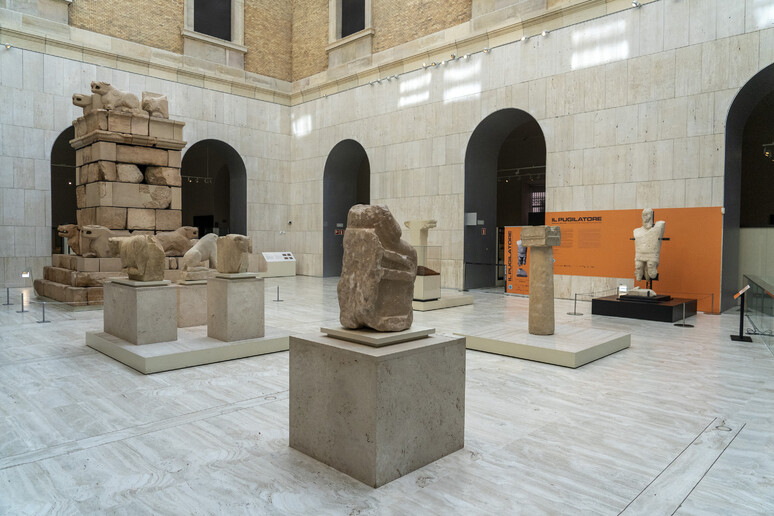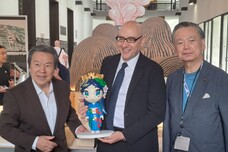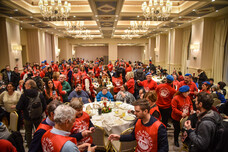(By Paola Del Vecchio)
It was March 1974 when Sisinnio Poddi, while plowing on the
slopes of Mont'e Prama, in the Sinis peninsula, in Sardinia,
found a stone head.
He didn't imagine that it would be the beginning of one of the
greatest adventures for the knowledge of the Nuragic
civilization - and of a story that is still largely unwritten.
Fifty years later, the necropolis of Mont'e Prama continues to
amaze archaeologists and enthusiasts.
From the thousands of fragments brought to light, over 30
sculptures of the Stone Giants have been reconstructed, an army
of archers, warriors and boxers, which constitutes the first
example of statuary in the Mediterranean, dating back to the
Iron Age (between the 9th and 7th centuries BC).
It's a unique heritage exhibited in the Giovanni Marongiu Civic
Museum in Cabras, where you can admire the sculptures in 3D
reconstructions, and at the National Archaeological Museum in
Cagliari.
The colossi, like the nuraghes, have become symbols of the
identity of the ancient Nuragic culture and its ambassadors in
the world, as demonstrated by the arrival of the boxer
'Manneddu' at the Archaeological Museum of Madrid.
The first excavation campaigns at Mont'e Prama, which began
between 1975 and 1979, under the guidance of archaeologists
Alessandro Bedini and then Carlo Tronchetti, brought to light
over 5,000 fragments, parts of the mighty limestone sculptures,
models of nuraghes of various types and betyls.
Between 2007 and 2011, the work of recomposing and restoring the
enigmatic figures with triangular faces and characteristic eyes
with concentric circles was carried out at the Li Punti
Restoration and Conservation Centre in Sassari.
And then there was the reconstruction of a large sector of the
necropolis, which houses a type of burial unique in Sardinia: a
funerary road with a long sequence of individual well tombs,
covered with sandstone slabs.
The skeletons, in a contracted position, are almost exclusively
of young and adult males.
For this reason it is thought to have been a place of cult to
the hero, reserved for the burial of the warrior elite, the
aristocracy of the Nuragic people.
In 2014, the resumption of excavations south of the areas
investigated by Bedini and Tronchetti, highlighted the
continuation of the alignment of the tombs.
And it led to the most striking discovery: the recovery of parts
of two statues of boxers, different from the first ones, whose
iconography is characterized by a flexible shield, which covers
the belly of the boxer and then bends to wrap around his arm and
shoulder.
The birth of the Mont'e Prama Foundation, chaired by Anthony
Muroni, was decisive for the development of the site in 2021.
The Ministry of Culture entrusted it with the sculptures and the
expansion of the Cabras Civic Museum, as well as the
archaeological area of ;;Tharros, the Tower of San Giovanni and
the hypogeum of San Salvatore.
The current investigation programs aim to expand the excavation
surface to clarify the organization of the necropolis, from the
layout to the formation of the sculptural complex, to its
destruction.
The year 2024, with the fiftieth anniversary, marked the opening
of important new construction sites at the sites of 'Conca
Illoni' and 'Cannedosu', and for an underwater survey of the
Cabras pond.
With the 'museumization' works at Mont'e Prama, for the
widespread natural archaeological park, the opening of the new
wing of the Civic Museum is scheduled for the three-year period
2024/26.
ALL RIGHTS RESERVED © Copyright ANSA











